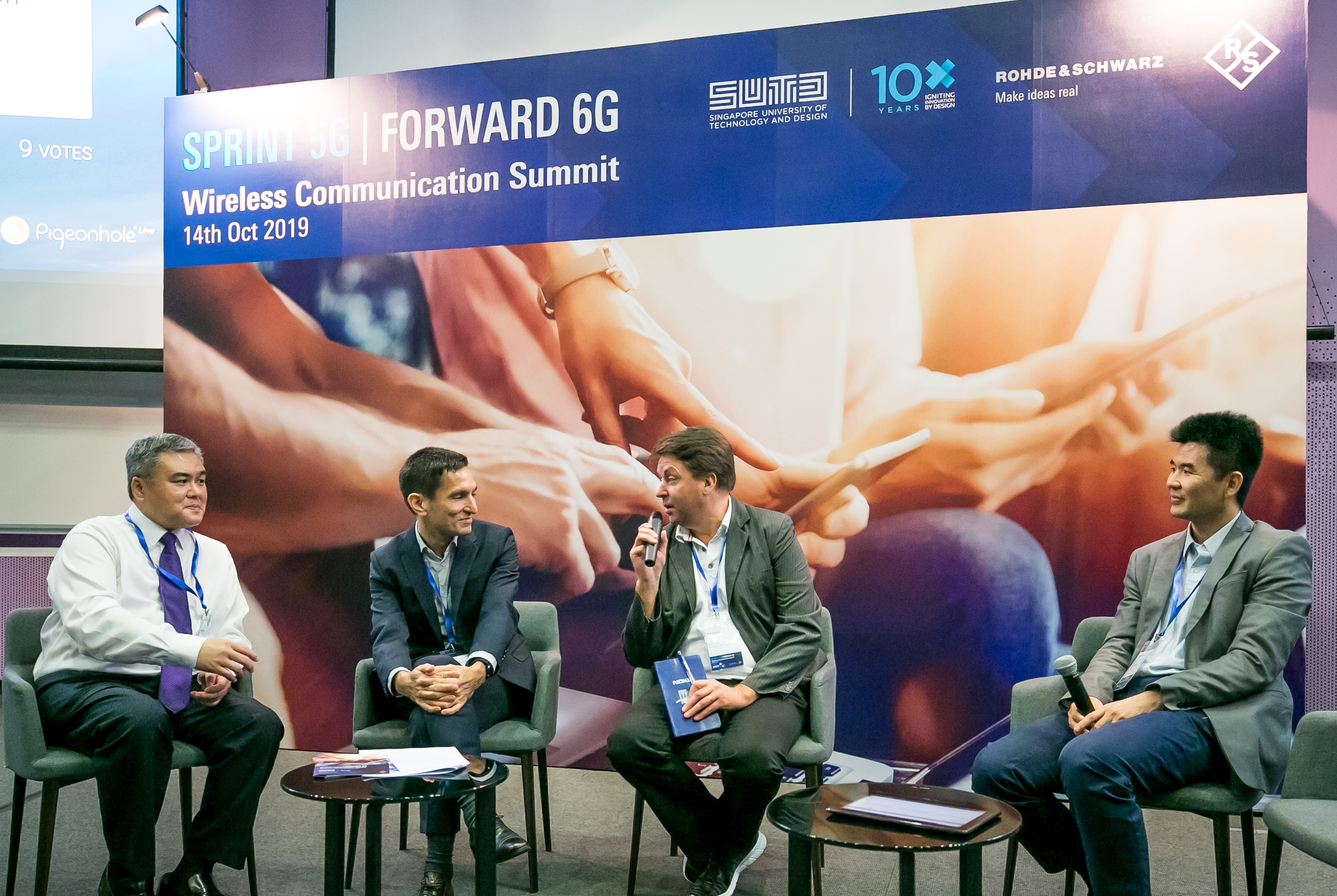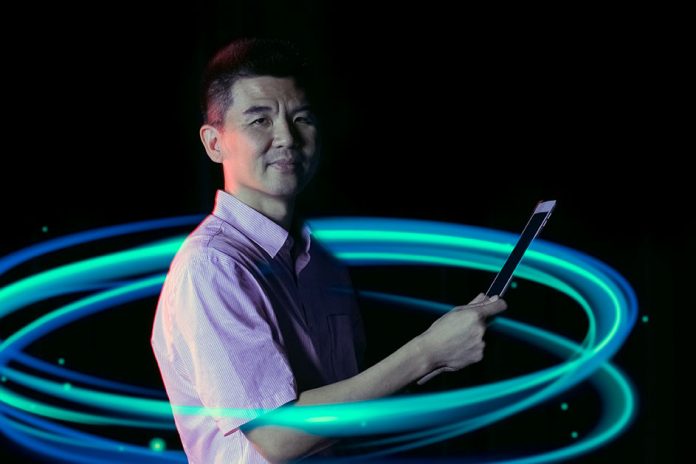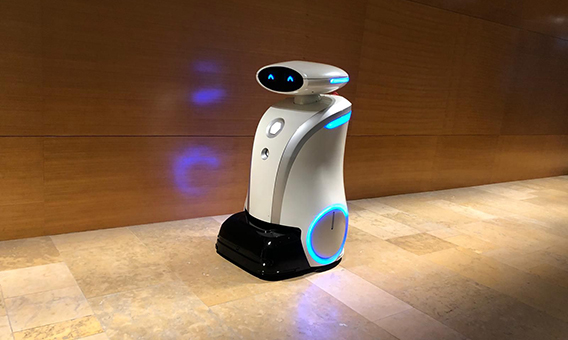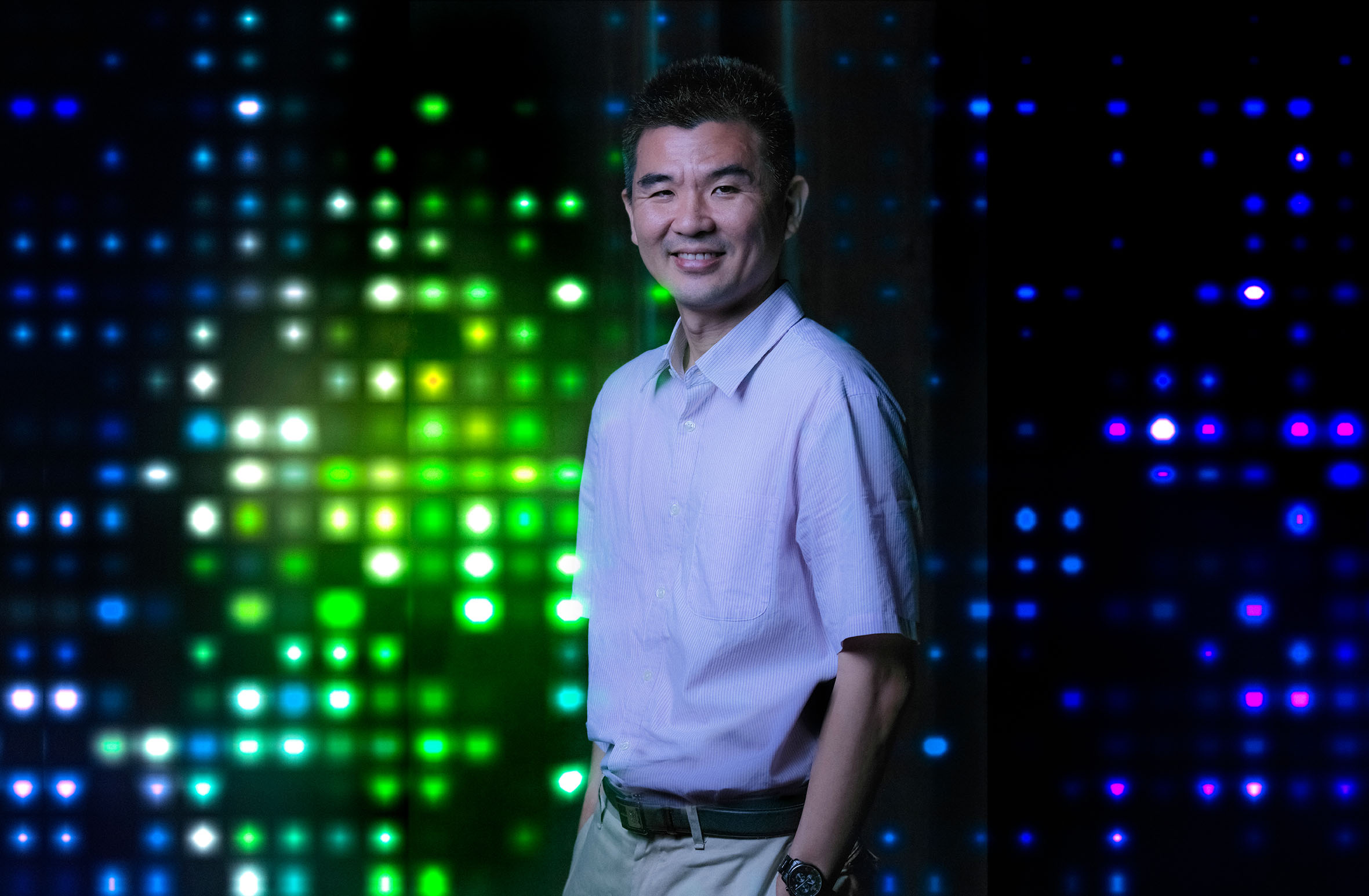This article first appeared in ASPIRE (2019, Vol 2, pages 8 and 9).
By Jessica Sasayiah, Research Communications
With the fifth-generation (5G) of wireless communications expected to be rolled out in Singapore in 2020, everyone is buzzing with anticipation to experience the larger bandwidth, wider coverage and lightning speed that 5G promises to offer. Associate Professor Tony Quek, Acting Head of Pillar for Information Systems Technology and Design in SUTD and a leader in the field of wireless networks, explains how 5G will be playing a key role in Singapore’s digital transformation and ultimately change the way we live.
Known to be around 10 times faster than 4G networks, 5G will be able to support smart cities, smart mobility, cloud gaming and robots like never before. With its extremely low latency, or ‘lag’ as it is more commonly known, 5G networks are able to ensure more accurate and timely real-time communication that is needed to support devices and take them to the next level.
“Take robots as an example. While we already have robots that can clean autonomously and identify obstacles in its path using embedded sensors, they are not able to distinguish if a certain obstacle is an inanimate object that can be approached closer for a thorough clean, or a small child, in which case it should maintain a safe distance. However, with a more powerful, faster network connection, it can support the additional sensors required to enable the robot to be ‘smarter’ which the current network is just unable to support,” explained Associate Professor Tony Quek, making reference to the cleaning robots operated by LionsBot International. The company was co-developed by SUTD’s Assistant Professor Mohan Rajesh Elara, a known expert in the robotics and AI field.
Cleaning robots by Lionsbot International
In more critical use cases, smart mobility such as self-driving cars or remote surgical procedures performed by robots simply cannot afford a lag in real-time communication as that might mean dire consequences for users and patients. The ultra-fast speeds that 5G networks are touted to have are seeking to advance such future technologies and make them more readily available.
SUTD at the forefront of Innovation
To explore the potential use cases of 5G, SUTD has partnered with M1, one of the major telecommunications service providers, to set up an indoor network testbed of 5G small cells. The testbed will be placed at SUTD and is the first indoor 5G system to be deployed in Singapore. Real-time remote operation of robots, augmented-reality content and e-scooters are some of the testbed’s areas of focus. This will help translate research innovations into industry solutions while providing SUTD’s students, faculty and staff invaluable access to the latest 5G technology.
Small cell networks, compared to conventional base stations which transmit networks over a wider span of geographical area, are able to be deployed indoors in locations such as trains, offices or residential homes. This allows for the network to be closer to users, resulting in a lower-power network and seamless coverage for quicker, reliable connectivity. Tony, whose research domain focuses on small cell networks, will be leading the testbed research in SUTD.
He has also co-authored two books, ‘Small Cell Networks’ and ‘Cloud Radio Access Networks’, published by Cambridge University Press in 2013 and 2016 respectively. His books have provided insights to academia and industry experts into the area of small cell solutions as well as opportunities for deep-diving into technical refinements to boost efficiency and network performance.
Professor Tony Quek
“This testbed for a small cell network will enable us to leverage our strengths to preempt any challenges that may come about during the deployment of 5G technology, figure out how to manage those challenges and eventually model them. It will also be an excellent platform for our faculty and students to experiment with new design and engineering ideas and push the boundaries of 5G,” pointed out Tony.
Powering On to 6G Networks
With the testing and deployment of 5G technology well underway, researchers and industry experts are already laying the groundwork to start thinking about 6G networks. At the ‘Sprint 5G | Forward 6G Wireless Communication Summit’ which was organised by Rohde & Schwarz and hosted by SUTD on 14 October 2019, Tony participated in the panel discussion on the ‘Outlook of Industry and Business Transformation Catalysed by 5G and 6G’. He discussed the strategy of developing sustained long-term research in artificial intelligence (AI) driven by ultra-high speed networks and shared how AI was not intended to replace humans, but rather leverage human intelligence and expertise to perform complex tasks.
“6G will open up a whole new world of possibilities for us. In the case of the cleaning robots, they can become more interactive and tactile. They will be able to interact with humans and other robots in real-time to know if a certain area needs more cleaning, or to step in to help other robots with their tasks if their “colleagues” are unable to do so automatically,” explained Tony.
 (From left to right) Panelists Dr. Lua Eng Keong, Dr. Taro Eichler, Prof. Matti Latva-aho and moderator, Prof. Tony Quek discussing the Outlook of Industry and Business Transformation Catalyzed by 5G and 6G at the Sprint 5G | Forward 6G Wireless Communication Summit at SUTD on 14 October 2019.
(From left to right) Panelists Dr. Lua Eng Keong, Dr. Taro Eichler, Prof. Matti Latva-aho and moderator, Prof. Tony Quek discussing the Outlook of Industry and Business Transformation Catalyzed by 5G and 6G at the Sprint 5G | Forward 6G Wireless Communication Summit at SUTD on 14 October 2019.
“But it doesn’t just stop there. 6G will also potentially allow us to have a more immersive, four-dimensional experience enhanced with digital scent technology when watching a
movie, playing a game or traveling virtually. Self-driving cars are also able to make more complex decisions on the fly when dealing with unexpected route changes with little or no
human intervention. The possibilities are endless and are truly exciting,” he said.
About Tony Quek
Tony Q.S. Quek received the Bachelor of Engineering and Master of Engineering degrees in Electrical and Electronics Engineering from Tokyo Institute of Technology. At MIT, he earned the Ph.D. in Electrical Engineering and Computer Science. Currently, he is a tenured Associate Professor with the Singapore University of Technology and Design (SUTD). He also serves as the Acting Head of ISTD Pillar and the Deputy Director of SUTDZJU IDEA. His research topics include wireless communications and networking, security, big data processing, network intelligence, and Internet of Things.
Associate Professor Quek has been actively involved in organising and chairing sessions and has served as a TPC member in numerous international conferences. He is currently an elected member of the IEEE Signal Processing Society SPCOM Technical Committee. He was an Executive Editorial Committee Member of the IEEE Transactions on Wireless Communications, an Editor of the IEEE Transactions on Communications, and an Editor of the IEEE Wireless Communications Letters.
He received the 2008 Philip Yeo Prize for Outstanding Achievement in Research, the IEEE Globecom 2010 Best Paper Award, the 2012 IEEE William R. Bennett Prize, the 2016 IEEE Signal Processing Society Young Author Best Paper Award, 2017 CTTC Early Achievement Award, 2017 IEEE ComSoc AP Outstanding Paper Award, and 2016 to 2019 Clarivate Analytics Highly Cited Researcher. He is a Distinguished Lecturer of the IEEE Communications Society and a Fellow of IEEE.
Like what you just read?
Missed our Open House talks? Rewatch the sessions here.
#whySUTD? We’re glad you asked – here’s why!
It can be hard to ask the right questions that will help you to decide which university to join, so we’ve compiled a list of FAQs for you here.


































